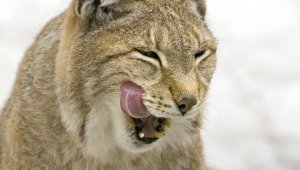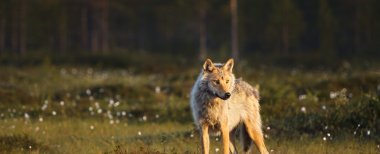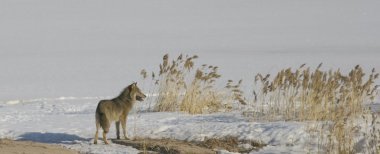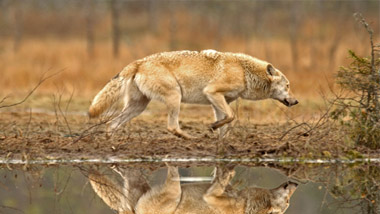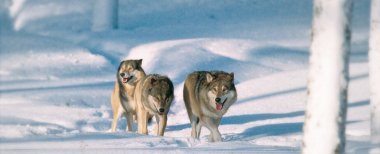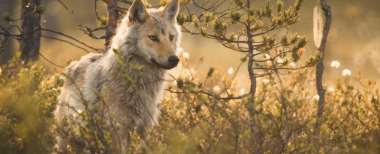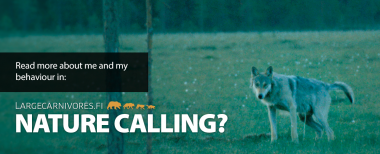Meeting a wolf
The wolf is a sizeable wild animal and large carnivore and you should remain calm and fearless when coming face to face with one. A rabid wolf or a wolf that is put on the defensive may harm a human, but this has not happened in Finland since the late 19th century.
Engagement needed at the local level to implement the measures in Management Plan for the Wolf Population
Wed Mar 27 15:30:00 2019
When it comes to promoting tolerance and social acceptance of wolves, the steering group in charge of the Management Plan for the Wolf Population stressed the importance of local and regional-level projects that focus on communication, increasing awareness about wolves, and prevention of damage caused by wolves. The work of the wolf territory cooperation groups was considered very important and was mentioned as a good example of engagement at the local level. The steering group also emphasised the important role played by communication and dialogue in resolving wolf-related conflicts and increasing trust between concerned parties.
In its meeting held on 6 March, the steering group in charge of the Management Plan for the Wolf Population also discussed illegal hunting of wolves and special questions related to reindeer herding areas. Multi-species management of large carnivore and cervid populations was highlighted as an important matter in need of further development.
Multi-species population management takes into account the interdependencies and relationships between large carnivore and cervid populations as they relate to the conditions of the ecosystem in question. The approach also takes into account economic impacts, such as damage caused by cervids, as well as regional differences between ecosystems and landscape structures.
Permanent Secretary Jaana Husu-Kallio from the Ministry of Agriculture and Forestry, who chairs the steering group, highlighted the importance of taking a holistic approach to large carnivore and cervid population management.
“Different game species, such as large carnivores and cervids, must be examined at the same time and in a way that takes into account their economic and social impacts. In order to be able to do this, we need research that can be used as the basis for multi-species population management,” Husu-Kallio emphasised.
Through multi-species population management, it is possible to develop cervid population management in a way that pays better attention to the special characteristics of the area in question.
Moving toward targets and measures
The Project to update the Management Plan for the Wolf Population has now progressed to the second phase of its working plan. In addition to the opening seminar, the project has so far included eight meetings in which the preparation group has discussed jointly agreed themes and conflict areas, such as attacks by wolves on domestic animals. Now the project is moving from more general assessments toward establishing concrete targets and measures. The top priority is strengthening trust in the management, regulation and monitoring of the wolf population through broad-based cooperation.
This April, the Ministry of Agriculture and Forestry and the regional game councils will hold seven regional stakeholder meetings in different parts of Finland as part of the project to update the Management Plan. In addition to the regional game councils, representatives from local interest groups and media outlets have been invited to the meetings. The goal of the meetings is to gain regional and local perspectives and ideas on measures to be added to the updated Management Plan.
“The stakeholder meetings are important arenas for discussions on the wolf population and for coming up with solutions,” says steering group chair Jaana Husu-Kallio.
In its next meeting, the steering group will have a more detailed discussion on communication related to wolves.
Report a sighting
A large carnivore sighting can consist of seeing the animal itself, or spotting the tracks, droppings, carcasses, claw marks or other signs left behind by the carnivore somewhere in the wilds. By reporting your sighting you are taking part in game animal research. Every year tens of thousands of sig...
Damage prevention
Occasionally large carnivores cause damages to domestic animals. Livestock and hunting dogs are the most common targets. However, a significant portion of large carnivore damages may be avoided with the right kind of preventive measures.
Large carnivores in populated areas & road accidents
A large carnivore that causes damage, repeatedly acts in a problematic manner or ventures into a populated area must always be reported to the emergency exchange (tel: 112). The primary aim is to scare the predator away from coming too close to populated areas. The animal is only put down if it is b...
